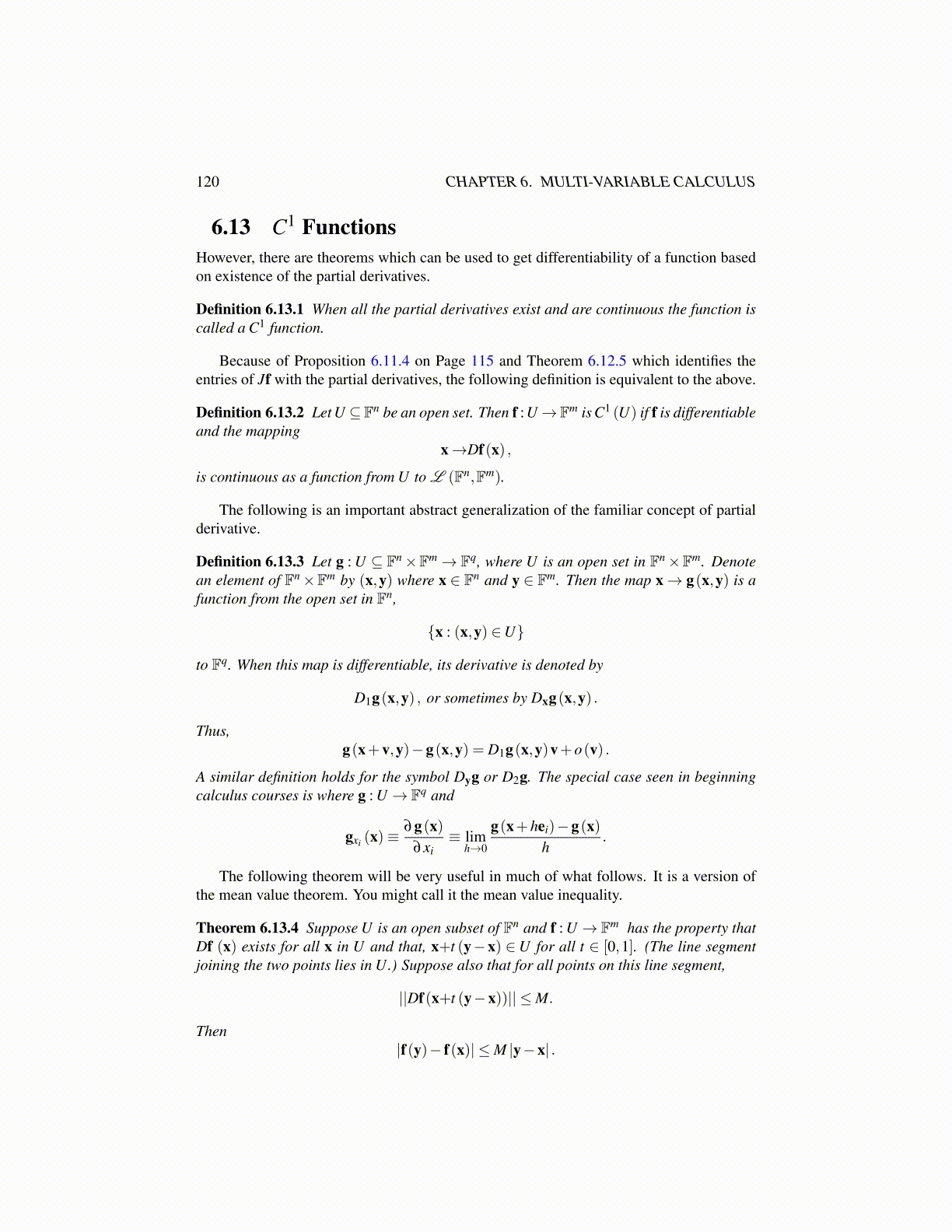
120 CHAPTER 6. MULTI-VARIABLE CALCULUS
6.13 C1 FunctionsHowever, there are theorems which can be used to get differentiability of a function basedon existence of the partial derivatives.
Definition 6.13.1 When all the partial derivatives exist and are continuous the function iscalled a C1 function.
Because of Proposition 6.11.4 on Page 115 and Theorem 6.12.5 which identifies theentries of Jf with the partial derivatives, the following definition is equivalent to the above.
Definition 6.13.2 Let U ⊆Fn be an open set. Then f :U→Fm is C1 (U) if f is differentiableand the mapping
x→Df(x) ,
is continuous as a function from U to L (Fn,Fm).
The following is an important abstract generalization of the familiar concept of partialderivative.
Definition 6.13.3 Let g : U ⊆ Fn×Fm→ Fq, where U is an open set in Fn×Fm. Denotean element of Fn×Fm by (x,y) where x ∈ Fn and y ∈ Fm. Then the map x→ g(x,y) is afunction from the open set in Fn,
{x : (x,y) ∈U}
to Fq. When this map is differentiable, its derivative is denoted by
D1g(x,y) , or sometimes by Dxg(x,y) .
Thus,g(x+v,y)−g(x,y) = D1g(x,y)v+o(v) .
A similar definition holds for the symbol Dyg or D2g. The special case seen in beginningcalculus courses is where g : U → Fq and
gxi (x)≡∂g(x)
∂xi≡ lim
h→0
g(x+hei)−g(x)h
.
The following theorem will be very useful in much of what follows. It is a version ofthe mean value theorem. You might call it the mean value inequality.
Theorem 6.13.4 Suppose U is an open subset of Fn and f : U → Fm has the property thatDf (x) exists for all x in U and that, x+t (y−x) ∈U for all t ∈ [0,1]. (The line segmentjoining the two points lies in U.) Suppose also that for all points on this line segment,
||Df(x+t (y−x))|| ≤M.
Then|f(y)− f(x)| ≤M |y−x| .